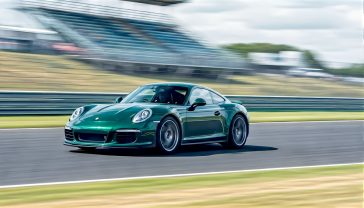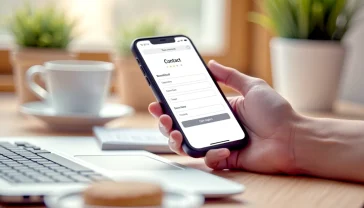How Do Air Source Heat Pumps Really Work? Guide to Beating the Chill (and Your Bills)
Discover the simple science behind air source heat pumps. This complete UK guide explains how they work, the costs, grants, and pros and cons.

This post may contain affiliate links. If you make a purchase through these links, we may earn a commission at no additional cost to you.
Picture a cold, dark winter evening. You hear the familiar click and rumble as the gas boiler fires up, a sound that’s both comforting and slightly terrifying when you think about your next energy bill. For decades, that sound has been the soundtrack to keeping warm in Britain. But now, there’s a new sound—or rather, a quiet hum—that’s changing everything.
It comes from a smart-looking box that sits neatly outside a growing number of British homes. This is an air source heat pump (ASHP), and it’s at the heart of a quiet revolution in home heating. It’s a technology that sounds like something from a sci-fi film: it pulls heat out of thin, cold air and uses it to warm your house.
But how does it actually do that? Is it some sort of magic? And more importantly, can it really work through a damp, grey British winter and save you money?
Forget the jargon and confusing technical diagrams. This is the ultimate, no-nonsense guide to understanding exactly how air source heat pumps work. We’ll break down the clever science, bust the common myths, and give you the straight facts you need to know if one of these devices is right for your home. Let’s pull back the curtain on the future of heating.
The Big Secret: How to Pull Heat from Thin (and Chilly) Air
The most common question people ask is: “How can you get heat from cold air?” It feels like breaking the laws of physics. But the secret is simple: even cold air has heat energy.
Think about it this way: for air to have zero heat, it would need to be at absolute zero (-273.15°C), which is colder than deep space. So, the air on a freezing 0°C winter’s day in Manchester is actually packed with heat energy compared to that. An air source heat pump is just incredibly good at grabbing that energy, concentrating it, and moving it into your home.
It’s Not Magic, It’s Just Clever Physics (Think of a Fridge in Reverse)
The easiest way to understand a heat pump is to look at something you already have in your kitchen: a fridge.
A fridge’s job is to keep the inside cool. It does this by pulling heat from inside the box and dumping it out into your kitchen through the warm coils on the back. A heat pump does the exact same thing, but in reverse. It finds heat outside your home and moves it inside. In summer, some models can even reverse this process to provide cooling, just like an air conditioner.
It’s all based on a beautifully simple principle you learned in school: when a liquid turns into a gas, it absorbs heat, and when a gas condenses back into a liquid, it releases heat. A heat pump just manages this cycle over and over again with incredible efficiency.
The Four-Step Dance: A Simple Walkthrough
Inside every heat pump, a special fluid called a refrigerant is on a constant journey. This refrigerant has a very low boiling point, meaning it can turn to gas even when it’s freezing outside. This property is the key to the whole process.
Here’s the four-step dance it performs to warm your home:
- Step 1: Absorb (Outside) The cycle begins in the outdoor unit—the box in your garden. A large fan pulls outside air across a network of pipes containing the cold, liquid refrigerant. Even if it’s 2°C outside, that air is much warmer than the refrigerant. The heat from the air is absorbed by the refrigerant, causing it to boil and turn into a gas. The air blown back out is now colder, having given up some of its heat.
- Step 2: Squeeze (Outside) This low-temperature gas then travels to a compressor. This is the powerhouse of the system and the main part that uses electricity. The compressor, as the name suggests, squeezes the gas into a much smaller space. When you compress any gas, its temperature skyrockets. Think of how a bike pump gets hot when you use it—it’s the same principle. The refrigerant gas is now very, very hot.
- Step 3: Release (Inside) This super-hot, high-pressure gas is now pumped into your home to the indoor unit. Here, it passes through another set of coils (a heat exchanger) next to the water for your central heating system. The heat from the gas transfers to the water, warming it up to heat your radiators and your hot water tank. As it releases its heat, the refrigerant gas condenses back into a high-pressure liquid.
- Step 4: Repeat (Outside) This warm, high-pressure liquid flows back outside through an expansion valve. This valve causes a sudden drop in pressure, making the liquid refrigerant instantly become incredibly cold again, ready to go back to Step 1 and absorb more heat from the outside air.
This four-step dance happens continuously, constantly moving low-grade heat from the outside, concentrating it, and releasing it inside your home.
Meet the Key Players: The Parts of a Heat Pump
Understanding the main components helps to demystify the whole system.
- The Outdoor Unit: This is the most visible part. It’s a weatherproof box containing the evaporator coil (where the refrigerant absorbs heat) and a large fan to move the air. It looks a bit like an air conditioning unit.
- The Compressor: Usually located in the outdoor unit, this is the engine of the pump. It uses electricity to pressurise the refrigerant gas, which is the crucial step that generates high temperatures.
- The Refrigerant: This is the “magic” fluid that carries heat on its journey. It’s an engineered substance that can change state between liquid and gas at very low temperatures.
- The Indoor Unit: This is where the heat is delivered to your home. In an air-to-water system, this is a heat exchanger that transfers the heat to the water in your central heating system. It’s often housed in a unit that looks like a modern boiler.
Air-to-Water vs. Air-to-Air: Which One is for Your Home?
Air source heat pumps come in two main flavours. The right one for you depends on your home and what you want to achieve.
Air-to-Water: The Most Common Choice for British Homes
This is the type you’ll see most often in the UK. An air-to-water heat pump heats water, which then circulates through your radiators or underfloor heating system, and also provides hot water for your taps and showers.
It’s designed to be a direct replacement for a gas, oil, or LPG boiler, using the same network of pipes and radiators (though you might need to upgrade them—more on that later). It’s the go-to solution for whole-house heating and hot water.
- Best for: Most UK homes with an existing central heating system.
- How it works: Provides hot water for radiators, underfloor heating, and taps.
Air-to-Air: More Like Air Conditioning in Reverse
An air-to-air heat pump works differently. Instead of heating water, it blows warm air directly into a room through indoor units that look like small, sleek air conditioners mounted on the wall.
This system doesn’t provide hot water for your taps, and it’s not designed to heat a whole house via a network of ducts like in some American homes. However, it’s great for heating specific areas like a conservatory, a home office, or an open-plan living space. A big bonus is that most air-to-air systems can also run in reverse to provide cooling in the summer.
- Best for: Heating single rooms, extensions, or homes without “wet” central heating.
- How it works: Blows warm air directly into a room. Often provides cooling as well.
Monobloc vs. Split: What’s the Difference?
You might also hear installers talk about “monobloc” or “split” systems. This just refers to how the system is packaged.
- Monobloc: This means “one block.” All the key components, including the heat exchanger, are housed in a single outdoor unit. Hot water pipes then run from this unit into your house to connect to your heating system. They are generally simpler and quicker to install.
- Split: A split system has an outdoor unit and an indoor unit. The refrigerant circulates between them in pipes. The heat exchange happens in the indoor unit. This installation is more complex and legally requires a specialist F-Gas registered engineer to handle the refrigerant lines.
For most UK homeowners, a monobloc air-to-water system is the most common and straightforward choice.
The All-Important Question: Do They Actually Work in a British Winter?
This is the number one concern for many people, and it’s a fair one. We’re used to boilers that produce scorching hot water on demand. Can a machine that relies on cold air really keep a house warm when there’s frost on the ground?
Yes, Even When It’s Freezing
The short answer is yes, absolutely. Modern air source heat pumps are designed to work efficiently in temperatures as low as -15°C, and some models can even operate at -25°C. That’s far colder than a typical winter in even the chilliest parts of the UK.
Remember the science: as long as the refrigerant is colder than the outside air, it can absorb heat. The system is engineered so the refrigerant is always cold enough to do its job.
Of course, as the air gets colder, the heat pump has to work harder to extract the same amount of heat. This means its efficiency drops slightly in the depths of winter, but it still works perfectly well.
Occasionally, in cold and damp conditions, you might see ice form on the fins of the outdoor unit. This is completely normal. The heat pump has a built-in defrost cycle. It will briefly reverse its operation for a few minutes, sending a little hot refrigerant back to the outdoor coil to melt the ice, before switching back to heating mode. You probably won’t even notice it happening.
Efficiency: The Numbers that Matter (COP and SPF)
When talking about heat pump efficiency, you’ll hear two acronyms: COP and SPF. They sound technical, but the idea is simple.
- What is COP (Coefficient of Performance)? This is a measure of the pump’s efficiency at a specific moment in time, under specific outdoor temperatures. If a heat pump has a COP of 4, it means that for every 1 kilowatt (kW) of electricity it uses, it produces 4 kW of heat. The other 3 kW have been captured from the air for free.
- What is SPF (Seasonal Performance Factor)? The COP changes with the weather. The SPF is a much more useful, real-world measure. It represents the average efficiency of the heat pump over an entire year, taking into account all the mild autumn days, freezing winter nights, and cool spring mornings. A typical SPF for a well-designed system in the UK is around 3.0, meaning it is 300% efficient on average.
To put that in perspective, a brand-new A-rated gas boiler is around 94% efficient. For every 1 kW of gas it burns, it produces 0.94 kW of heat. An oil boiler is even less. So, even though electricity costs more per unit than gas, the huge efficiency gain of a heat pump means it can still be cheaper to run.
The Practical Guide for UK Homeowners: Is a Heat Pump Right for You?
A heat pump is a brilliant piece of technology, but it’s not a simple drop-in replacement for a boiler. To get the best results, your home needs to be ready for it.
First Things First: Insulation, Insulation, Insulation
This is the golden rule. Heat pumps work best in well-insulated homes.
Traditional boilers work by blasting very hot water (around 70-80°C) to radiators, which quickly heats a room. Heat pumps are designed to be more gentle. They work best by providing a constant, steady supply of warmth at a lower water temperature (around 35-50°C).
If your home is draughty and poorly insulated, this gentle heat will escape as fast as the pump produces it. Your heat pump will have to work much harder, your home won’t feel warm, and your bills will be high. Before you even think about getting a heat pump, make sure your home has:
- Good loft insulation (at least 270mm)
- Cavity wall insulation (if you have cavity walls) or solid wall insulation
- High-quality double or triple glazing
- Draught-proofing around doors and windows
Radiators and Underfloor Heating: Do I Need to Change Them?
Because the water from a heat pump isn’t as hot as water from a boiler, you need a larger surface area to release the same amount of heat into the room.
- Underfloor Heating: This is the perfect partner for a heat pump. It has a huge surface area and is designed to run at the low flow temperatures that heat pumps love.
- Radiators: Your existing radiators might be too small. An installer will perform a room-by-room heat loss calculation to figure this out. You may need to replace some of them with larger, more efficient models. Modern “K2” (double panel, double convector) or “K3” (triple panel) radiators are often recommended as they have a much larger surface area to give off heat.
The Cost Breakdown: Installation and Running Costs
Let’s be upfront: installing a heat pump is a significant investment.
- Upfront Cost: A fully installed air-to-water heat pump system in the UK typically costs between £7,000 and £15,000, though it can be more for very large or complex properties. This price usually includes the heat pump itself, a new hot water cylinder designed for heat pumps, and any necessary radiator upgrades.
- Government Support: The good news is that the UK government is keen to encourage the switch. The Boiler Upgrade Scheme (BUS) in England and Wales provides a £7,500 grant to help cover the upfront cost. Similar schemes are available in Scotland. This grant brings the cost much closer to that of a new boiler installation.
- Running Costs: This is the big one. Will it save you money? For most people switching from oil, LPG, or old electric heating, the answer is a resounding yes. For those on mains gas, it’s more nuanced and depends heavily on your home’s insulation and your electricity tariff. With the BUS grant factored in, many households find their running costs are lower than with gas, especially if they can use a smart electricity tariff with cheaper off-peak rates.
“Are They Noisy?” Debunking the Myth
Early heat pumps had a reputation for being noisy, but modern models are much quieter. The noise comes from the fan and the compressor. A good quality, well-sited heat pump will produce around 40-50 decibels (dB) when measured from a few metres away.
To put that into context, that’s about the same noise level as a modern refrigerator, a quiet library, or a hushed conversation. It’s certainly not silent, but it’s unlikely to disturb you or your neighbours. There are also strict planning rules about how close a unit can be placed to a neighbour’s property to ensure noise is never an issue.
A Brief History of a Bright Idea
The concept of a heat pump isn’t new. The brilliant physicist Lord Kelvin outlined the scientific principles of a “heat multiplier” way back in 1852. However, for over a century, the technology was a niche interest. With cheap and plentiful fossil fuels, there was little incentive to develop a more efficient alternative.
It wasn’t until the energy crises of the 1970s and, more recently, the urgent need to tackle climate change that heat pumps came into their own. Now, with the UK’s commitment to achieving Net Zero emissions by 2050, the government has identified heat pumps as the leading technology for decarbonising our homes.
The Big Picture: Heat Pumps and the Future of Britain
Switching to a heat pump isn’t just a personal choice; it’s part of a huge national transition.
The End of the Gas Boiler Era
Heating our homes accounts for around 14% of the UK’s total carbon emissions. To hit our climate targets, we have to stop burning gas. The government has already announced that gas boilers will be banned in all new-build homes from 2025, and it’s expected that a full phase-out will follow. Air source heat pumps are the government’s number one replacement technology.
A Smarter, Greener Grid
As Britain generates more of its electricity from renewable sources like wind and solar, the carbon footprint of the electricity we use gets smaller and smaller. This makes running a heat pump an even greener choice.
Furthermore, heat pumps are “smart grid ready.” They can be programmed to work with flexible electricity tariffs, running mainly during off-peak hours when electricity is cheaper and more likely to be generated from renewable sources. They can heat your hot water tank overnight, for example, storing that energy for you to use in the morning.
Conclusion: Is an Air Source Heat Pump the Future of Your Home?
So, how do air source heat pumps work? They don’t make heat; they simply move it. By using a clever refrigeration cycle, they gather existing heat from the outside air, concentrate it with a compressor, and release it into your home with incredible efficiency.
They are not a magic bullet. The upfront cost is high (though grants help enormously), and they demand a well-insulated home to perform at their best.
But they represent a remarkable piece of engineering that is ready for the mainstream. They are three to four times more efficient than the best gas boiler, they drastically cut a home’s carbon footprint, and they offer a clear path away from our reliance on volatile fossil fuel markets.
The quiet hum you might hear from a neighbour’s garden isn’t just a machine keeping a house warm. It’s the sound of the future of home heating in Britain. And it’s a future that’s cleaner, smarter, and quieter for everyone.
Further Reading
For those who wish to delve deeper, these resources offer authoritative and detailed information:
- Energy Saving Trust: Independent and impartial advice on heat pumps for UK homeowners.
- MCS (Microgeneration Certification Scheme): The standards body for low-carbon energy technology. You can find certified installers here.
- Ofgem: The official government regulator with details on the Boiler Upgrade Scheme.
- The Heat Pump Federation: The leading trade association for the UK heat pump industry.






